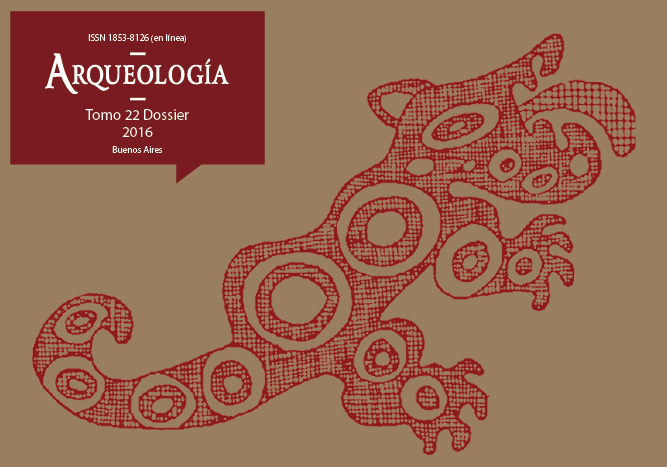Morphometric analysis of <i>Mytilus edulis</i>: a tool for analysing shell middens and Patagonian Coastal archaeology
Keywords:
Mytilus edulis, Fragmentation, Morphometry, Archaeomalacology, Coastal Patagonia
Abstract
Fragmentation is one of the most important taphonomic processes in archaeomalacological assemblages. The quantity of fragmented malacological material introduces biases that affect the interpretation of formation processes, shell midden preservation and human gathering strategies. In this paper we analyze the process of Mytilus edulis fragmentation at the PE 133 site, thereby presenting a methodology for studying archaeomalacological assemblages. The results show that no relationship could be established between shell size and the degree of fragmentation. This demonstrates that fragmentation depends on the mollusk characteristics. Therefore, shell thickness, shape and chemical composition, are more important that the size of the individual, the type of sediment, or site formation history. Finally, fragmentation introduces bias into shell length analysis, so that morphometric equations are a useful tool that permits us to to study fragmented individuals, resulting in a decrease in fragmentation bias.Downloads
Download data is not yet available.
How to Cite
Lobbia, P. A. (1). Morphometric analysis of <i>Mytilus edulis</i>: a tool for analysing shell middens and Patagonian Coastal archaeology. Arqueología, 22(3), 145-161. https://doi.org/10.34096/arqueologia.t22.n0.3281
Section
Articles
Authors who publish in this journal agree to the following conditions:
- Authors retain copyright and yield to the journal right of first publication with the work registered with attribution license Creative Commons, which allows third parties to use the published always mentioning the authorship of the work and first publication in this magazine.
- Authors can make other independent and additional contractual arrangements for the non-exclusive distribution of the version of the article published in this issue (p. Eg., Inclusion in an institutional repository or publish it in a book), provided that clearly indicate that the work was published for the first time in this magazine.
- It allows and encourages the author / s to publish their work online (eg institutional or personal pages) before and during the process of revision and publication, as it can lead to productive exchanges and greater and more rapid dissemination of work published (See The Effect of Open Access).





(1)13.png)






1.jpg)
1.jpg)


13.png)
1.png)


(1)1.png)









